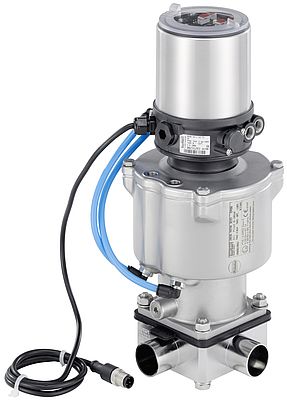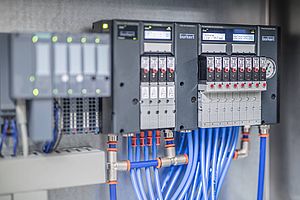In order to meet regulatory demands - current and future - companies need to carefully plan any new installations but also review more recent innovations that can be implemented on an existing manufacturing process. The thing is that process control systems that operate in hygienic environments are subject to high levels of regulation and certification as well as regular audits to ensure continued compliance.
Hygienic Processes
Many hygienic processes will use a cleaning procedure, either clean-in-place (CIP) or steam-in-place (SIP), to maintain hygienic conditions within the process pipework and control valves. These processes can be largely automated and, providing the system has been correctly designed, very effective in disinfecting and cleaning process lines. However, the effectiveness of these systems is also reliant on valve design which should minimise internal volumes and avoid dead flow zones, which can hamper the cleaning process.
The excellent strength and cleanability of stainless steel makes it the material of choice for the vast majority of vessels, pipework and valves but achieving a high standard of cleanliness involves some refinement of the raw material. Some valves, such as Bürkert’s ROBOLUX design, use a system of electro-polishing, which involves the removal of 30 µm of metal from the media contact surface with a special electrolyte, under the effect of DC current. The material is removed without mechanical, thermal and chemical influences. As a result, the surface becomes smooth and shiny in the micro range; possible damaged outer layers are removed, and the properties of the pure stainless steel can be utilised.
In the past, the polishing process may have been completed by hand using small electric polishing wheels, which can be rather labour intensive and time consuming. This process is now automated and can also involve the use of an abrasive paste that is repeatedly pumped through the valve body in order to achieve a surface finish of less than 0.4 µm. This produces a very uniform surface which is then electro-polished to give a near mirror finish for all areas that come into contact with the process media. Using these processes it is possible to produce extremely smooth surfaces, even in complex valve arrangements, and this enables the CIP or SIP process to be effective.
Ensuring Cleaning Cycles
In hygienic applications where CIP / SIP are operated, it is essential to be able to ensure the cleaning cycle is both effective and efficient. In situations where larger scale process equipment is being installed there will almost certainly be a factory acceptance test, part of which must demonstrate and document the effectiveness of the cleaning process. Bürkert is able to test cleaning cycles and provide 100% reliability on the flow properties and cleanability of a complete valve system by using a riboflavin test rig. As one of the few manufacturers of fittings and valve interfaces in the world that owns and operates such a test rig, Bürkert ensures that the effectiveness and efficiency of each design is proven.
However, while the internals of a fluid control system is very important, the external equipment must also meet a number of demanding criteria in order to be deemed suitable for operation in hygienic applications. Valve positioners / controllers, sensors, control cabinets all play a role in the control system and as such need to be suitable protected against corrosion and cleaning processes.




















